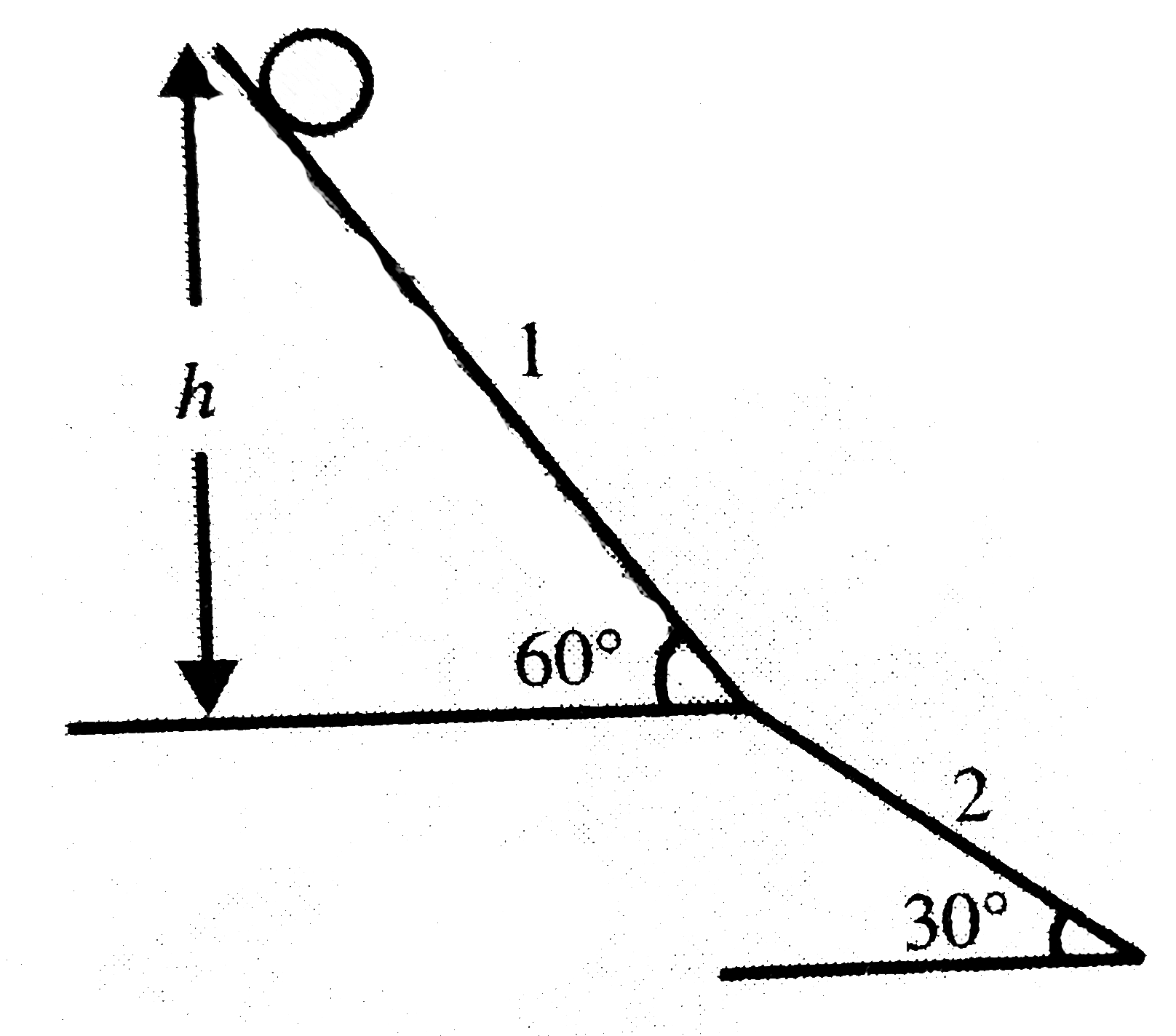A body B is capable of remaining stationary inside a liquid at the position shown in Fig. (a). If the whole system is gently placed on smooth inclined plane and is allowed to slide down, then (0<0<90∘)

The body will move up (relative to liquid)
The body will move down (relative to liquid)
The body will remain stationary (relative to liquid).
The body will move up for some inclination θ and d move down for another inclination θ
The correct Answer is:D
Due to acceleration down the plane, both body B and liquid will received the same component of acceleration down the plane.
Topper's Solved these Questions
- BOOK - CENGAGE PHYSICSCHAPTER - FLUID MECHANICSEXERCISE - Multipe Correct15videos
FLUID MECHANICS
- BOOK - CENGAGE PHYSICSCHAPTER - FLUID MECHANICSEXERCISE - Assertion-Reasoning8videos
FLUID MECHANICS
- BOOK - CENGAGE PHYSICSCHAPTER - FLUID MECHANICSEXERCISE - Subjective25videos
FLUID MECHANICS
- BOOK - CENGAGE PHYSICSCHAPTER - DIMENSIONS & MEASUREMENTEXERCISE - Integer2videos
DIMENSIONS & MEASUREMENT
- BOOK - CENGAGE PHYSICSCHAPTER - GRAVITATIONEXERCISE - INTEGER_TYPE1videos
GRAVITATION
Similar Questions
A body is sliding down an inclined plane having coefficient of friction 0.5. If the normal reaction is twice that of resultant downward force along the inclined plane, then find the angle between the inclined plane and the horizontal .
View SolutionA frictionless inclined plane of length l having inclination θ is placed inside a lift which is accelerating downward with on acceleration a (<g). If a block is allowed to move down the inclined plane, from rest, then the time taken by the block to slide from top of the inclined plane to the bottom of the inclined plane is
View Solution
Knowledge Check
- Question 1 - Select One
A body floats in completely immersed condition in water as shown in figure. As the whole system is allowed to slide down freely along the inclined surface, the magnityde of buoyant force
 Aremains unchangedBincreasesCdecreasesDbecomes zero
Aremains unchangedBincreasesCdecreasesDbecomes zero - Question 2 - Select One
A spherical body of radius R is allowed to roll down on an incline with out slipping and it recheas with a speed v0 at the bottom. The incline is then made smooth by waxing and the body is allowed top slide without rolling and now the speed attained is 54v0 The radius of gyration of the body about an axis passing through the centre is
A43RB34RC52RD25R - Question 3 - Select One
An object is placed on the surface of a smooth inclined plane of inclination . It takes time t to reach the bottom of the inclined plane. If the same object is allowed to slide down rough inclined plane of same inclination , it takes time nt to reach the bottom where n is a number greater than 1. The coefficient of friction is given by -
Aμ=tanθ(1−1n2)Bμ=cotθ(1−1n2)Cμ=tanθ(1−1n2)1/2Dμ=cotθ(1−1n2)1/2
A smooth ball is released from rest from a height h as shown in figure. It slides down the first inclined plane and collides with the second inclined plane.
a. If e=0, find the speed of the ball just after leaving the inclined plane 1.
b. If the particle mioves horizontally just after the collision find e.
 View Solution
View SolutionIn moving a body of mass m once up and down a smooth incline 0 total work done is (S is length of the plane):
View SolutionA sphere of outer radius R having some cavity inside is allowed to roll down on an incline. The incline is then made smooth by waxing and the sphere is allowed to slide without rolling and now the speed attained is (5/4)v0. What is the radius of gyration of the sphere about an axis passing through its centre ?
View SolutionA block moves down a smooth inclined plane of inclination θ. Its velocity on reaching the bottom is v. If it slides down a rough inclined plane of some inclination, its velocity on reaching the bottom is v/n, where n is a number greater than 0. The coefficient of friction is given by -
View SolutionAn object is placed on the surface of a smooth inclined plane of inclination . It takes time t to reach the bottom of the inclined plane. If the same object is allowed to slide down rough inclined plane of same inclination , it takes time nt to reach the bottom where n is a number greater than 1. The coefficient of friction is given by -
View Solution

